The elevator arrives with a soft chime, doors opening to reveal a lounge that feels more like someone’s well-appointed living room than a hotel space. There are pastel Mediterranean colors, bird motifs, and books scattered everywhere with deliberate casualness. Outside, Causeway Bay pulses with its usual frenetic energy – swinging shopping bags, taxi horns, the eternal hunt for space in this part of the city built on borrowed land. Inside Lanson Place, everything slows down just enough to breathe.
You might not realize it from the glossy consumerist sheen of its modern-day shop fronts that Causeway Bay has history.
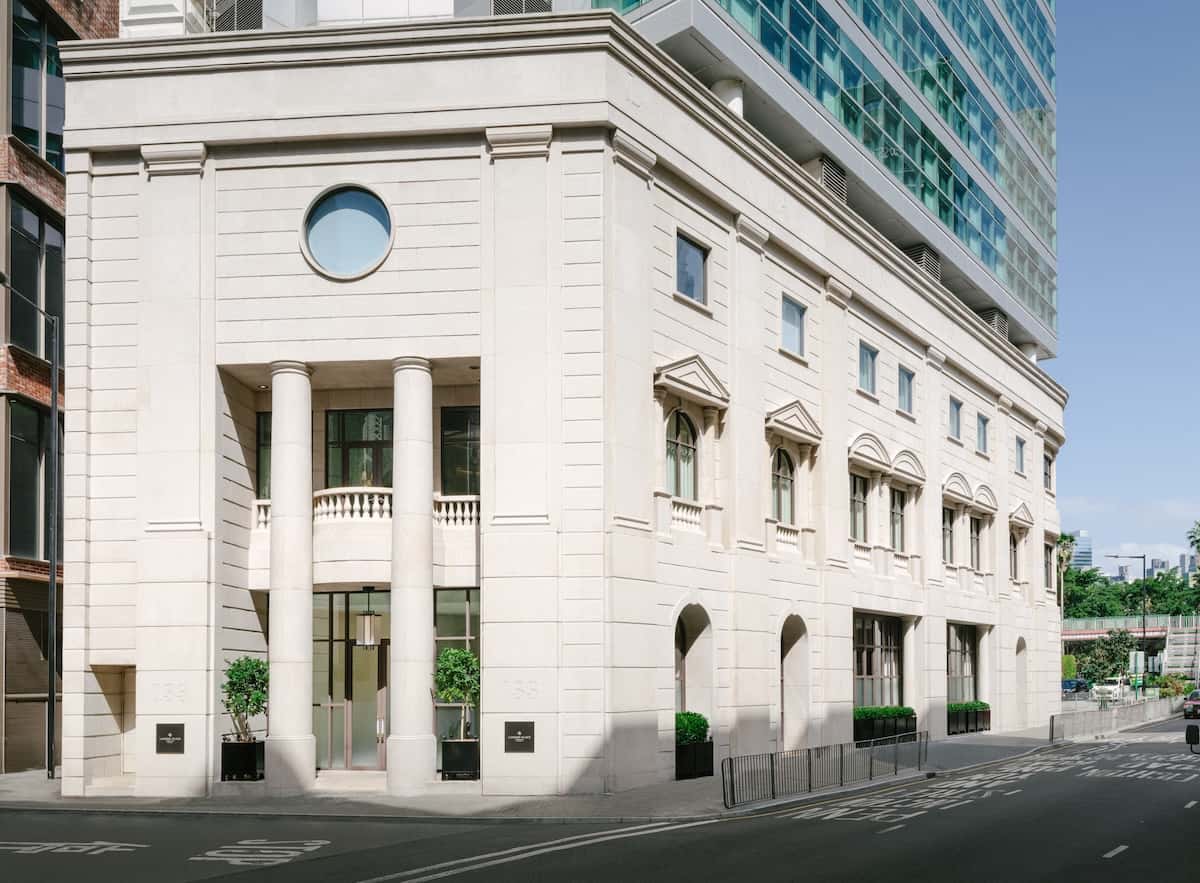
Wandering Into An Urban Fairy Tale
Victoria Park — the vast 19-hectare swatch of green stretching northeast – was a typhoon shelter. The shopping strip was four Japanese department stores that made Causeway Bay the ‘Little Ginza’ of Hong Kong. The ground beneath: harbor bottom and swampland, were actual islands that clubbed together in the area’s reclamation project when the city needed more space.
Salon Lanson’ signature evening cocktails, three of which, from a menu of 21 cocktails, are offered to guests with club privileges every evening – right now the Victoria Spritz, Forgotten Island, and Little Ginza – take this history and turn it into delectable drinks. They’re presented on a postcard, with a sketch of oversized trees, leaning buildings, and small figures in between as a preview for guests heading out into the urban sprawl, giving them a pep in their step imagining they’re wandering into this urban fairy tale.
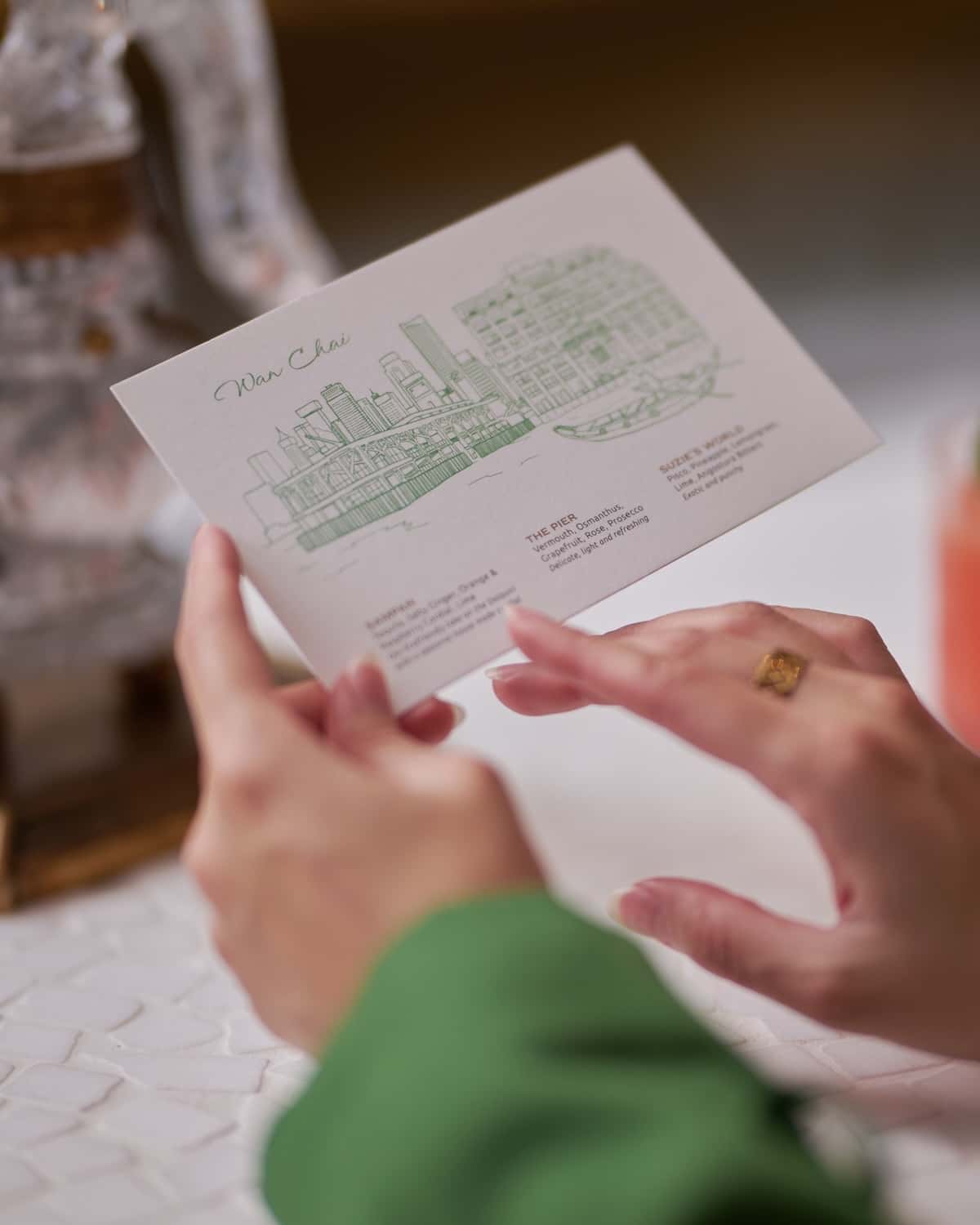
A Fresh And Familiar Makeover At Lanson Place
Lanson Place operates on the same principle. The hotel makes the commercial feel magical, the sleek feel homely, the new feel like it’s always been there. Lanson Place, after all, kind of has.
The Causeway Bay hotel first opened in 2005, a lifetime ago in Hong Kong’s ever-shifting hospitality landscape – the flagship property of Lanson Place Hospitality Management.
The hotel underwent a renovation – maybe a makeover is more fitting for this fashionable location; picture it stepping out of a couture store changing room revitalized – and reopened in March 2024 a pastel-colored, Mediterranean-inspired boutique that feels both fresh and familiar, Matisse prints against abstract oil paintings, prim flowers against coffee table tomes.
It’s so homely, in fact, that there are penthouses on the top floor in case guests can’t bear to leave. There are six of them, ranging from 900 to 2000 square feet, designed for monthly stays, transforming hotel guests into temporary residents who’ve found their urban sanctuary above the Causeway Bay fray with the calming views of Victoria Park to remind them to rest up, and maybe get some exercise.
With a Fitness Centre so inviting – wooden floors that feel warm underfoot, the space broken into rooms as you venture deeper, like discovering a series of private studios rather than entering one communal sweat lodge – the choice of a sedentary lifestyle rests entirely with its guests.
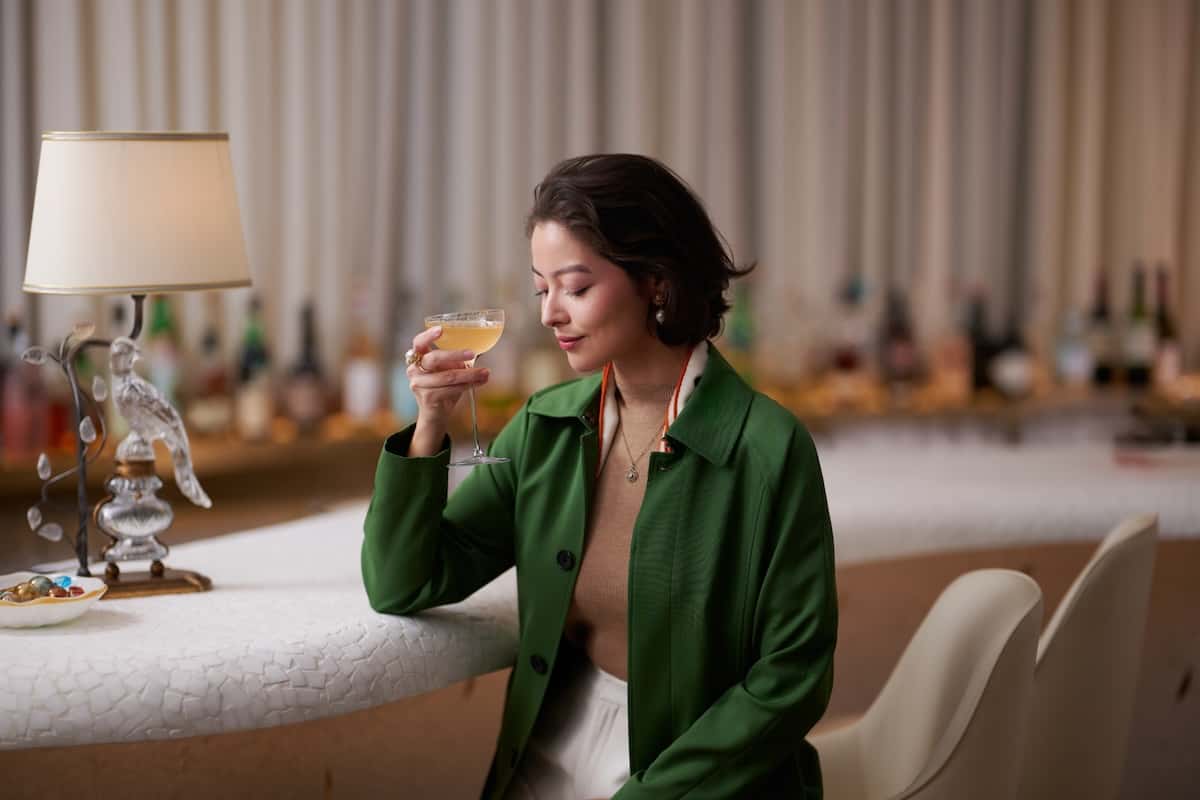
Designer Pierre-Yves Rochon – the ‘master of luxury’ behind a long list of hotel projects from Four Seasons, to Ritz-Carlton, to St. Regis, and The Peninsula, and behind culinary spaces created for Joël Robuchon, Alain Ducasse, Paul Bocuse, Gérard Boyer, and Jean-Georges Vongerichten – infused the hotel with understated French elegance.
The three Mediterranean color themes run through every room: yellow for sunlight, green for nature, blue for ocean, with books coordinated with colors. There’s an oddly out-of-place book too, David Hockney’s ‘My Window,’ on the table beside the elevator.
Elsewhere, there are art pieces scattered throughout like a private collection, heavy doors that close with satisfying weight, and strange acts of symmetry, like the trees and sofas in L’Orangerie, a living room-event space the other side of the lift lobby. Everything seems to breathe despite being packed into Causeway Bay’s urban density.
Importantly, Pierre-Yves’ team understood something crucial about Hong Kong living: luxury isn’t about size, it’s about precision. Every corner serves double duty, every surface is considered.
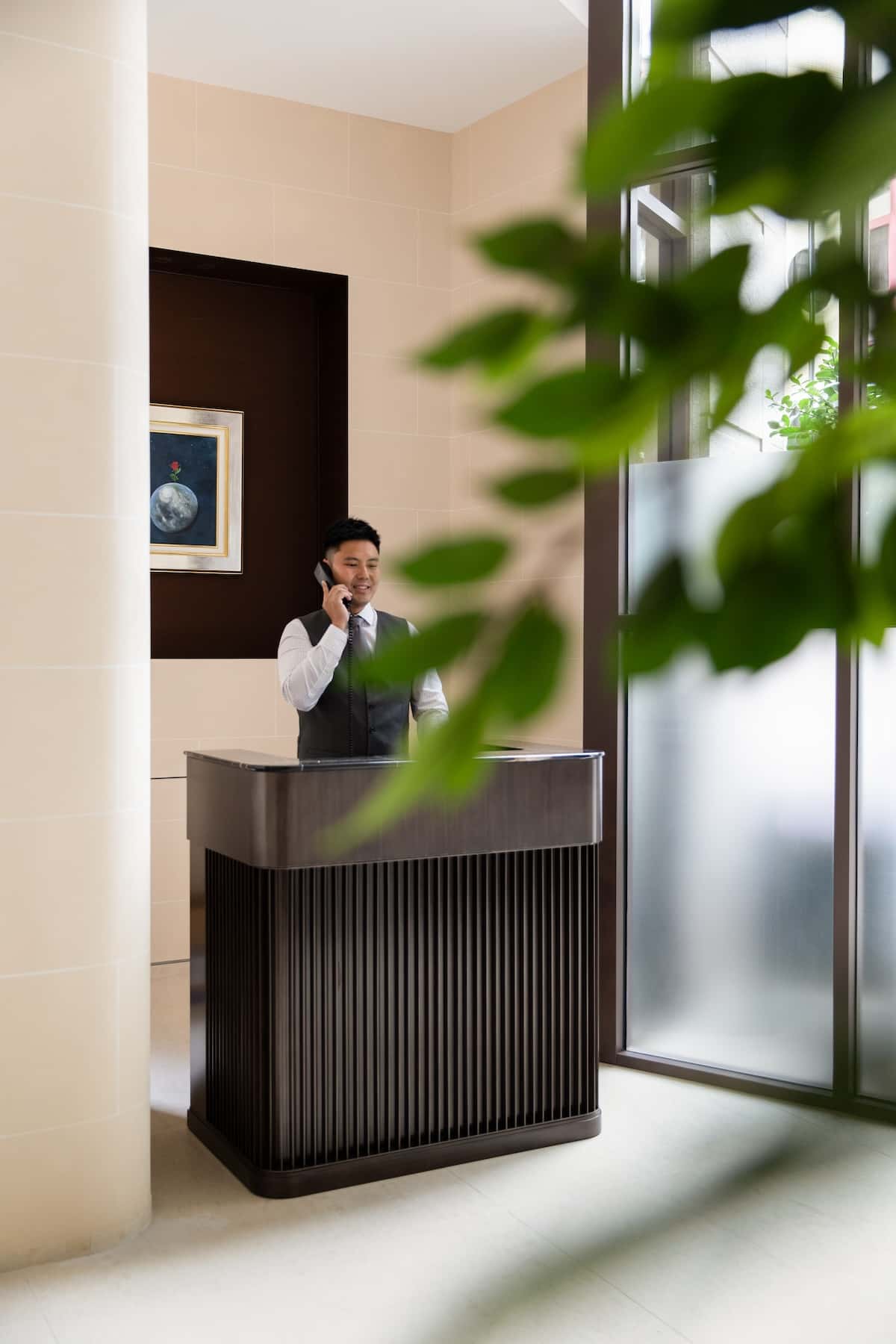
Even The Lilies Got The Memo About The Dress Code
Take Salon Lanson – where Atelier Camuset hand rendered the gold-painted birds swirling around the atrium just before opening. Even the lilies nodding along to the music seem to have got the memo about the dress code, here white tinged with green, set against the interior’s pastel greens that feel as calming as the expanse of park outside.
The space serves breakfast in the morning (cloudy Japanese apple juice and ice-cold prosecco, à la carte wonton noodles and crowaffles capped with vanilla whipped cream and berries – and a buffet, that has guests browning toast slightly incongruously beside the sophisticated private dining room that’s available for gatherings and events).
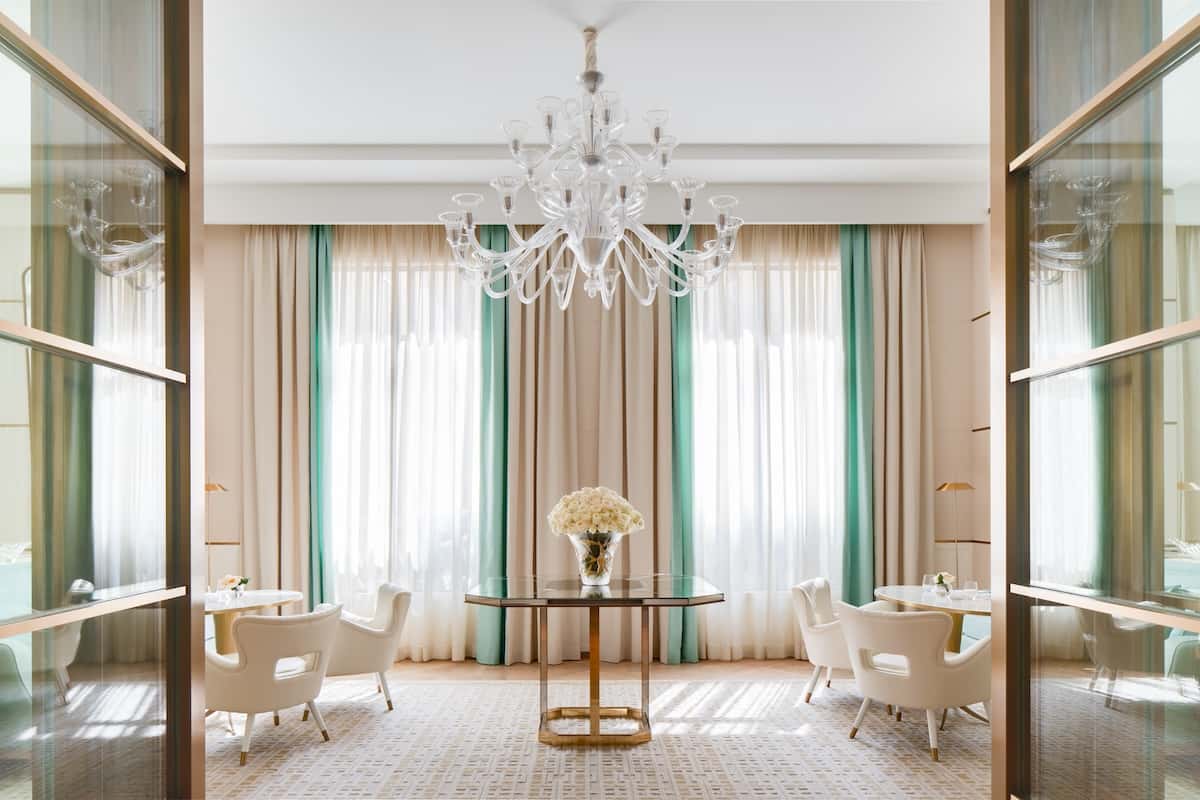
Something Like Spatial Choreography
It’s also acts as an extended living room available for guests with club privileges all day, and where those cocktails are served with canapés (Iberico jamón crisp breads and mini Peking duck wraps) as delicate as the décor when evening falls.
Then as shopping fatigue sets in, and evening turns to night, for in-house guests and the steady stream of walk-in diners, Salon Lanson offers a menu of all-time classic comfort foods: club sandwiches and French onion soups.
It’s something like spatial choreography – one room, multiple lives, no wasted motion.
Even Sam, the assistant manager, doubles as sommelier – one of his former lives in hospitality. And he pulls out bottles that feel like beloved companions from his cellar at home. There are champagnes – the Larmandier-Bernier Terre De Vertus 2017 is crisp, mineral-bright, with an austere elegance with chalk and citrus, and clean lines, the kind of champagne that clears your palate, and a Roger Coulon Millésime 2013 Blanc de Noirs, that’s richer, rounder, a progression from sharp focus to soft embrace, from morning clarity to evening warmth.
And there are pairings of reds and whites – the Roux Père & Fils Saint-Aubin Premier Cru with the lobster bisque, a white Burgundy with a mineral backbone cutting through the bisque’s richness while its subtle oak embraces the lobster’s sweetness, and the Brunello di Montalcino Filo di Seta with the aurora angus ribeye; deep, structured, with tannins that grip the steak’s char.
It’s the staff, then, who help bring the space to life. There’s typically Hong Kong-style attentiveness – brash, hustling, chatty – hailing taxis before you’ve finished saying where you’re going, dispensing umbrellas during the thirty-second walk from lobby to street, checking in frequently in case you need anything, anything at all.
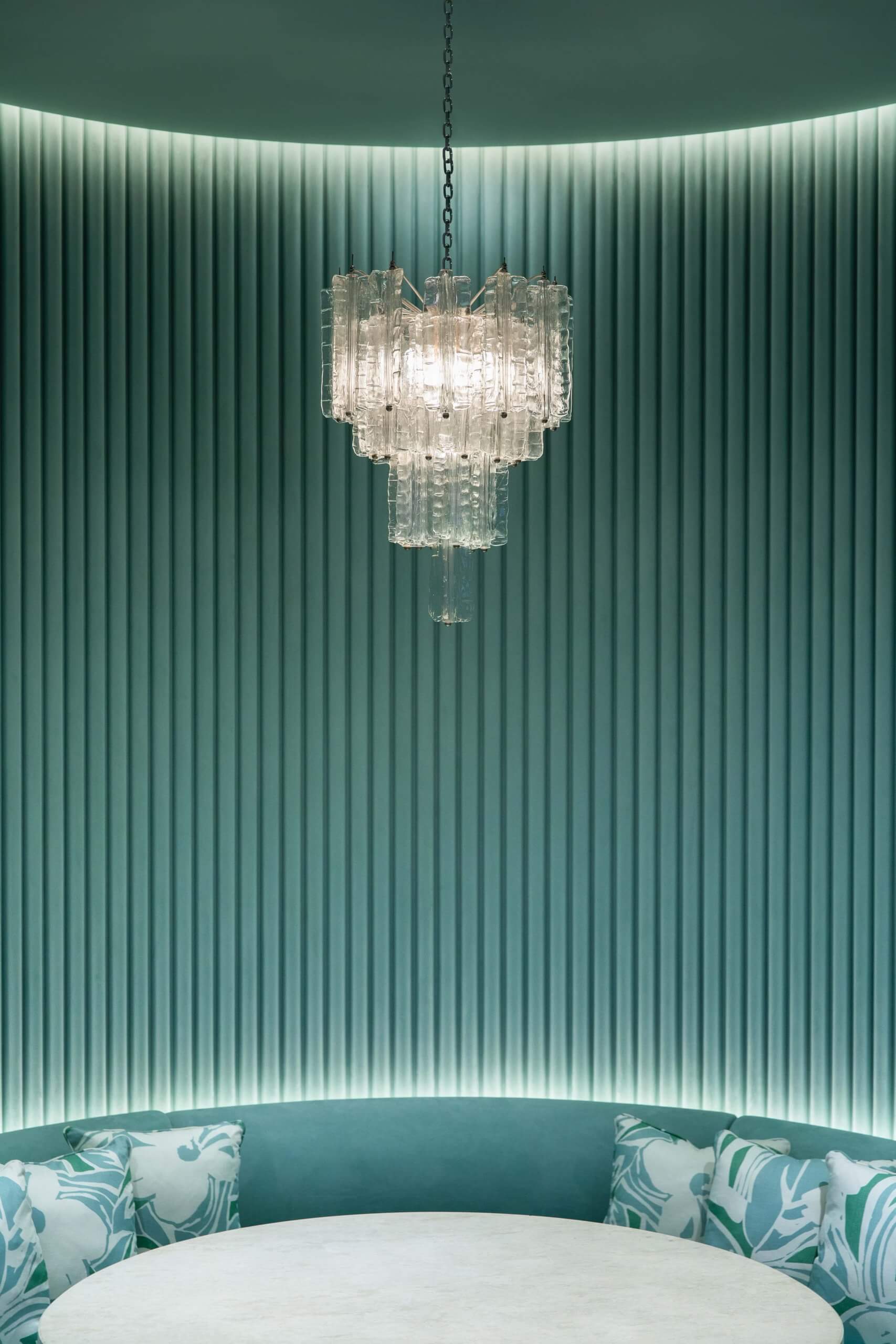
Lanson Place: Making The Ordinary Feel Precious
“Art has to move you, design does not,” David Hockney once said. His book, on the table by the elevators, is full of luminous digital drawings of the view from his Yorkshire bedroom, capturing fleeting moments through hours, days, seasons.
Like Hockney’s window paintings, Lanson Place is about framing what you see, making the ordinary feel precious. The fitness center that feels like a home studio. Penthouses perched on top. Staff who anticipate your needs before you know you have them. Views of Victoria Park that remind you to rest up.
Maybe then, at Lanson Place, the design moves you anyway.










 Wink Hotels' is a new kind of Vietnamese hotel made for the modern traveler and ready to take on the world.
Wink Hotels' is a new kind of Vietnamese hotel made for the modern traveler and ready to take on the world.